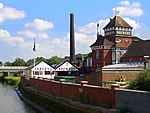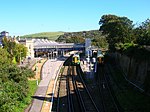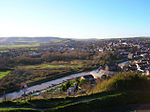Fitzroy House
1862 establishments in EnglandArchitecture in the United Kingdom by cityBuildings and structures completed in 1862Buildings and structures in East SussexEnglish architecture ... and 4 more
Former library buildings of the United KingdomGrade II listed buildings in East SussexHistory of East SussexLewes

Fitzroy House is a Victorian building on the High Street in Lewes, East Sussex, England. It was originally Fitzroy Memorial Library, designed by architect George Gilbert Scott in neo-Gothic style and built in 1862. In 1897 it became Lewes' first public library, until 1956 when it became offices. It was left empty and decaying for 20 years before being renovated and used as a family home for 40 years, as well as an occasional venue for music and theater. In 2016 it was sold. The main focal point of the house is the double-height Octagon Room.
Excerpt from the Wikipedia article Fitzroy House (License: CC BY-SA 3.0, Authors, Images).Fitzroy House
High Street,
Geographical coordinates (GPS) Address Nearby Places Show on map
Geographical coordinates (GPS)
| Latitude | Longitude |
|---|---|
| N 50.874 ° | E 0.0147 ° |
Address
Fitzroy House
High Street 10
BN7 2LD , Cliffe
England, United Kingdom
Open on Google Maps











